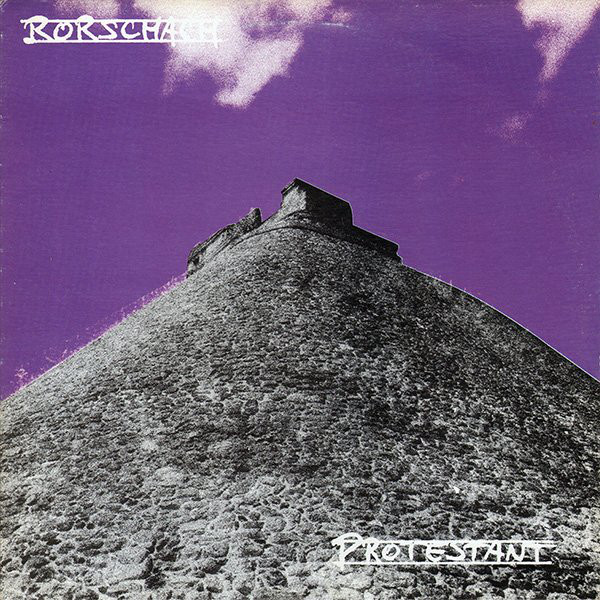Protest the Heroes of the US Metal Underground - 92%
I only found out that this band were listed here a few months back; which was a surprise at first having in mind that their first instalment was a psyched-out outburst of hardcore/punk with interesting dissonant Voivod-esque additives, making it sound like the dangerously mutated, schizoid “sibling” of “Dimension Hatross” at times, with echoes of the early works of the legends Die Kreuzen as well.
I believe the guys surprised themselves even with the album reviewed here. The hardcore/punk base is still evident, but it only serves as a base on which the band weave a complex, multi-layered tapestry with several influences coming on top of each other, most of the time to a pretty positive effect. Generally, this may be described as progressive thrashcore with post-thrash and doomy ingredients freely “floating” around. “Mandible” is already a most schizoid opener with creepy abrasive guitars boding the coming of the industrial metal wave which has started shaping gradually at the time; the apocalyptic hysterical vocals are the most unnerving accompaniment imaginable to this distressing musical cavalcade which becomes more quirky and abstract with time until the introduction of the intriguing melodic deviations in the second half. “In Ruins” brings things back to normal with raging, almost grinding, passages, but expect also jumpy doomisms ala Confessor and some absolutely outlandish melodic atonality. “Traditional” is spastic Voivod-ish hardcore with interesting dissonant moments and sudden turns to more violent bash the resultant amalgam receiving a weirder decoration on “Drawn & Quartered” which bashes with both more chaos and more style bordering on pure Slayer-esque thrash at some stage, not to mention the stylish technical chops and the doomy elegies that overtake the aether later.
“Shanks” is futuristic eccentricity with spacey dissonant escapades taking turns with more Confessor-esque stomps and more aggressive, semi-chaotic rifforamas. More eclecticism arrives with “Recurring Nightmare 105” which is jarring scratchy doomisms that may stretch the listener’s nerves, especially after “Blinders” offers pretty much the same kind of psychotic, dishevelled, schizoid entertainment. “Hemlock” reminds of Voivod again with more linear riff-formulas taking turns with wild restless leaps and bounds creating tense psychotic atmosphere. “Raw Nerve” is a leftover from the debut, hectic noisy hardcore with the most rending, overshouty vocal support imaginable; but “Skin Culture” is on the opposite pole with patient, gradually evolving rhythms with an oblivious, quasi-doomy vibe the obligatory hectic faster-paced deviation a rude awakening with a dissonant twist. “Cut the Wheel” offers a similar blend only that the speedy digression is pure unbridled grindcore with tons of bizarre riff applications breaking the stride; and “Ornaments” is a surprisingly downbeat closer notching up the good old doom as a finale without any more eclectic embellishments.
This would be a truly rewarding listening experience for seekers of the left-hand path in music although quite a few metal heads would dismiss it immediately due to its highly diverse character, not necessarily related to metal the whole time. The hardboiled hardcore fans would frown quite a bit as well since this amalgam doesn’t constantly rely on that genre’s stripped-down, no-bars-held approach; in fact, it quite often ignores it with complicated mazey riff-patterns where the presence of speed is only ephemeral and frequently non-existent. An experimental effort on all counts, it amazingly coincided with the arrival of other bizarre eye-openers like Carbonized’s “Disharmonization”, Buzzard’s “Churp”, O.L.D.’s “Hold on to Your Face”, Verwaint’s “And Now It Remains for Us to Explain”, and Kinsky’s “Copula Mundi”, all appeared within the span of one year. The spastic unheralded time and tempo changes witnessed here have had their influence on the future mathcore movement including on the pioneers Lethargy and Converge; and the heavy, distorted at times, guitar approach was fairly relevant to the aggro/groovy sounds that were tormenting the audience at the time.
Only that Rorschach never gave it another go, and never managed to leave the underground the way some more persistent outfits did. A re-issue of their two full-lengths a few years ago is a great reminder of their legacy which should not remain buried; whatever signs of protests have been made in the past, have to come up to the surface to instigate another revolution on the ever-welcoming volatile music horizon.

